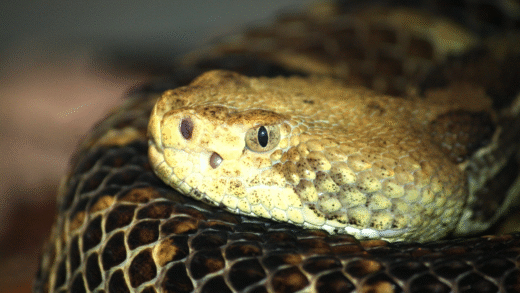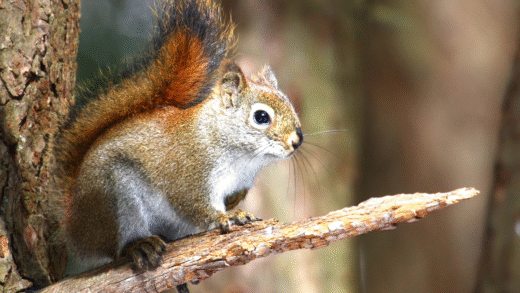The elephant hawk moth thrives in diverse habitats like woodlands, gardens, and meadows. It plays a crucial role as a pollinator and food source, indicating ecosystem health. Fun facts reveal their unique adaptability, flight speed, and behavior, making them a fascinating subject for study.
Baby Elephant Hawk Moth: What Do They Look Like?
The elephant hawk moth caterpillar is truly a sight to behold. With its vibrant green body, adorned with unique patterns, it stands out in the foliage. The caterpillar’s appearance can be likened to that of a plump, green sausage, measuring about 10 centimeters long. It has a distinct horn-like projection at its rear end, which adds to its striking look. This feature, combined with its smooth texture and occasional dark markings, makes it a fascinating creature.
Interestingly, the caterpillar can also change colors based on its environment. When resting on a green leaf, it blends in perfectly, making it less visible to predators. In contrast, when on a brown branch, it may take on a more brownish hue. This adaptability is crucial for its survival.
In summary, the elephant hawk moth caterpillar is not just visually appealing but also a master of disguise, showcasing an impressive blend of beauty and practicality.
The Ugly Duckling Comparison: Why is it Used?
The story of the ugly duckling resonates with many, and the elephant hawk moth caterpillar serves as a perfect example of this tale. Initially, the caterpillar may not seem attractive, often dismissed as just another garden pest. Its chunky, green body and unusual features can evoke mixed feelings. However, much like the ugly duckling, this caterpillar undergoes a remarkable transformation.
This comparison highlights the idea that beauty often lies beneath the surface. As the caterpillar prepares to metamorphose into a stunning moth, it sheds its unappealing exterior. This narrative serves as a reminder of the potential for change and the beauty that can emerge from unexpected places.
Ultimately, the elephant hawk moth caterpillar exemplifies the ugly duckling story, illustrating how perceptions can shift dramatically with time and transformation.
Adult Features: What Makes Them Beautiful?
The adult elephant hawk moth is nothing short of breathtaking. With a wingspan that can reach up to 10 centimeters, its presence is hard to miss. The wings are adorned with striking patterns of pink and green, resembling a work of art in nature. This vibrant coloration serves not only to attract mates but also to ward off potential predators.
Another remarkable feature of the adult moth is its long proboscis, which allows it to feed on nectar from deep flowers. This adaptation is crucial for its survival and plays a vital role in pollination, benefiting the ecosystem.
In summary, the adult elephant hawk moth showcases a stunning transformation from its caterpillar stage, embodying beauty and functionality. Its vibrant colors and unique feeding habits make it a captivating subject for nature enthusiasts and an essential component of its habitat.
Caterpillar to Moth Transformation: How Does It Happen?
The transformation of the elephant hawk moth from caterpillar to moth is a remarkable process known as metamorphosis. This journey begins when the caterpillar, or larva, prepares for its next stage. It typically finds a safe and sheltered spot, often on a leaf or in a crevice, where it can undergo this significant change.
During metamorphosis, the caterpillar first forms a protective casing called a chrysalis. Inside this shell, the caterpillar’s body undergoes a series of complex changes:
- Cellular Reorganization: The caterpillar’s tissues break down and reorganize into the structures of the moth.
- Wing Development: Cells form into wings, which will be essential for flight.
- Organ Formation: New organs develop, allowing the adult moth to function efficiently.
This entire process can take anywhere from a week to several weeks, depending on environmental conditions. Once complete, the adult moth emerges, expanding its wings and allowing them to dry before taking its first flight. This extraordinary transformation exemplifies the beauty of nature’s lifecycle.
Life Cycle Breakdown: What Stages Are Involved?
The life cycle of the elephant hawk moth comprises four distinct stages: egg, larva (caterpillar), pupa (chrysalis), and adult moth. Each stage plays a critical role in the moth’s development:
- Egg: The female moth lays eggs on suitable host plants, where they hatch into caterpillars.
- Larva (Caterpillar): After hatching, the caterpillar feeds voraciously on leaves, growing rapidly. This stage lasts about 3-4 weeks.
- Pupa (Chrysalis): The caterpillar forms a chrysalis, undergoing metamorphosis. This stage can vary in duration, influenced by climate and food availability.
- Adult Moth: Once the metamorphosis is complete, the moth emerges, ready to find a mate and continue the cycle.
Understanding these stages helps appreciate the elephant hawk moth’s ecological role. Each phase contributes to its survival and adaptation in various environments.
Unique Behaviors: What Sets Them Apart?
Elephant hawk moths exhibit several unique behaviors that distinguish them from other moths. These behaviors enhance their survival and reproduction:
- Nocturnal Activity: They are primarily active at night, which helps avoid many predators.
- Feeding Habits: Their long proboscis allows them to access nectar from deep flowers, making them effective pollinators.
- Camouflage: Both caterpillars and adults use color patterns for camouflage, helping them evade predators.
- Defensive Mechanisms: When threatened, the caterpillar can mimic a snake by rearing up, using its horn-like projection as a scare tactic.
These behaviors not only enhance their chances of survival but also illustrate the fascinating adaptability of the elephant hawk moth within its ecosystem.
Preferred Habitats: Where Do They Live?
The elephant hawk moth thrives in a variety of habitats, making it a versatile species. These moths prefer environments that offer ample food sources and shelter. Common habitats include:
- Woodland Areas: Elephant hawk moths are often found in deciduous forests where they can easily find host plants for their caterpillars.
- Gardens: Many gardens provide the rich foliage necessary for the caterpillars, making them a common sight in suburban areas.
- Hedges and Shrublands: These areas offer both food and protection from predators, making them ideal for both caterpillars and adult moths.
- Meadows: Open fields with wildflowers are perfect for adult moths to feed on nectar and for caterpillars to find nourishment.
Understanding the preferred habitats of the elephant hawk moth is crucial for conservation efforts. Protecting these environments helps ensure the survival of this fascinating species.
Ecosystem Contributions: Why Are They Important?
The elephant hawk moth plays a vital role in its ecosystem, contributing in several significant ways. First and foremost, they are important pollinators. Their long proboscis allows them to reach nectar in deep flowers, facilitating the pollination process. This not only benefits the moths but also supports the reproductive cycles of many plants.
Furthermore, as caterpillars, they serve as a food source for various predators, including birds and small mammals. This positions them as an integral part of the food web. Additionally, their presence indicates a healthy ecosystem; a diverse population of moths often correlates with biodiversity in the surrounding environment.
In summary, the elephant hawk moth contributes to both pollination and the food chain, making it an essential species for maintaining ecological balance.
Fun Facts: What Else Should You Know?
Elephant hawk moths are full of surprises! Here are some intriguing facts about them:
- Color Change: As caterpillars, they can change color based on their surroundings, an incredible adaptation for camouflage.
- Speedy Flyers: Adult moths are capable of flying at speeds of up to 30 miles per hour!
- Life Span: The adult elephant hawk moth typically lives for about two weeks, although some can survive longer in favorable conditions.
- Unique Sound: When threatened, they can produce a hissing sound by expelling air through their mouths, which can startle potential predators.
- Nighttime Activity: These moths are nocturnal, often seen fluttering around at dusk and dawn, which is when they are most active.
These fun facts highlight the remarkable nature of the elephant hawk moth, showcasing why they are a subject of fascination for many nature enthusiasts.





Comments are closed.